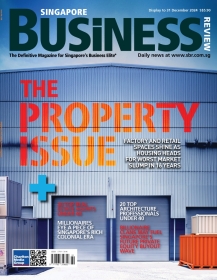
How should Singapore investors brace for increased market volatility?
Economic outlook for 2015 is sobering.
Market volatility has increased sharply most recently amid renewed pessimism over deteriorating economic growth prospects inside and outside Singapore. In Singapore, many analysts now argue that Singapore may be headed for a technical recession or two consecutive quarters of contraction in gross domestic products (GDP) as a result of the weaker-than-expected industrial production in August.
On a broader note, the median forecast of 23 economists surveyed by the Monetary Authority of Singapore just recently was for the GDP to expand 2.2% this year, down from the earlier expectation of 2.7% in June. This is not unique to Singapore, neighboring countries also have similar stories.
Markets also appear to be reacting to the increasing drumbeat from many market participants and observers that stocks are long overdue for a pullback. Is it still worth investing given the current market condition? How should investors make smarter decisions? What should they look out for? These are just some questions that are for sure playing around the minds of the market players and observers.
To shed light on how should investors brace for increased market volatility, Singapore Business Review spoke to some financial planners.
Here's what they have to say:
Tan Teng Boo, CEO of Capital Dynamics
Benjamin Graham said that investing is most intelligent when it is most business-like. It is probably one of the most useful investment advices that I have come across. What does this time proven wisdom mean? When investing in the stock market, investors typically focus on the share price, aiming to buy low and sell high. The nature of such an exercise entails the ability to time the stock market, an ability that most investors have failed to acquire successfully.
Often, investors buy high and sell low. Instead of buying low and selling high in terms of share price, investors should view their investments not as buying pieces of paper but rather as investing in businesses, even if they are only fractions of a business.
When a purchase is viewed in this manner, it is inevitable that the investor would have to compare the purchase price with the underlying value of the business or company. If the purchase price is lower than the company’s intrinsic value, such an investment is attractive and vice-versa.
How then does one work out the company’s intrinsic value? As Ben Graham counselled, one has to view the investment as one would when investing in a business. Besides the share price, one needs to understand the business model and the long-term economics of the business, the quality of management, the financial strength and the factors driving the valuation of the business. From these, one would get a sense of how much a business or company is worth.
Working out intrinsic valuation is neither rocket science nor an exercise in precise measurement. Needless to say, the more familiar one is with the business of a company, the more reliable one’s valuation would be. Nevertheless, an approximation in most cases would suffice.
Having done the above, a purchase where the share price is substantially below the company’s intrinsic value would generate a margin of safety. Consequently, an investor would buy low (in terms of valuation) and sell high (in terms of valuation). Such an action is very different from the “buy low sell high” adage.
Benjamin Graham was right. One has to view investing in the stock market as investing in businesses, not merely as buying pieces of paper.
If an investor has purchased sound businesses at reasonable prices, this investor has already positioned himself or herself well for market volatility. Investments made with sufficient margin of safety have a built-in risk management mechanism.
For many people, risk management is an after-thought. For value investors, risk management is already factored in before a purchase is made. For value investors, the more volatile the stock market, the more investing opportunities there are.
Another useful way to brace for increased market volatility is to have sufficient cash or near cash reserves. They come in very useful when there is market volatility on the downside.
Victor Jones, Director, Education & Trading Products, TD Ameritrade Asia
Portfolio diversification across markets and regions is a key component of solid investment strategy and risk management. Given the breadth and size of the U.S. equities markets, we are seeing an increasing number of investors enter the market to find stability and leverage opportunities for global diversification.
Investors and traders in Singapore can also look towards broad-based exchange traded funds (ETFs), which have historically lower volatility than individual equities and can serve as popular counters. Investors can also look at using options to protect their investments and generate income on those holdings during periods of increased volatility.
With the recent market volatility, we noticed last week that our Singaporean clients made a shift to a risk-on mentality becoming net security buyers.
In general, TD Ameritrade Asia clients added holdings more aggressively in sectors that have been stronger performers on the year, including Healthcare, Consumer Staples, and Consumer Discretionary while they chose to be more cautious in adding to lower performing sectors such as Industrials and Materials.
The Energy sector was also an area of interest for our clients last week. At this point, with the U.S. Federal Reserve holding tight on rates, investors were enticed by the sector’s strong annual yields at over 4.5 percent.
Overall, in search for strength amongst global weakness, our clients’ equity allocation continues to be most heavily weighted in the Technology sector.
Investors in Singapore continue to leverage the diversification and liquidity available through electronically traded funds. In fact, 1 out of every 3 equity trades and 1 out of every 3 options trades last week were placed on ETF underlyings.
ETF trading is concentrated in broad based indices (SPY, IWM, QQQ, DIA), volatility (VXX), currency (FXE), bonds (TBT, TLT), and commodities (USO) as clients diversify exposure across major markets, while simultaneously hedging interest rate, volatility, and energy risks.
To make smarter decisions during increased market volatility, information is key. Singapore investors need to ensure they stay on top of their positions, identify trade opportunities and define entry/exit points. Investors should not be focused on when the Federal Reserve starts raising rates, but rather the trajectory of the increases.
From a technology standpoint, having the ability to monitor and transact anytime, anywhere is critical. Currently, more than 20 percent of our daily trades from Singapore are entered on a mobile device. By using smart alerts, investors can react quickly to market positions, and make accurate portfolio assessments and better decisions.
























 Advertise
Advertise






